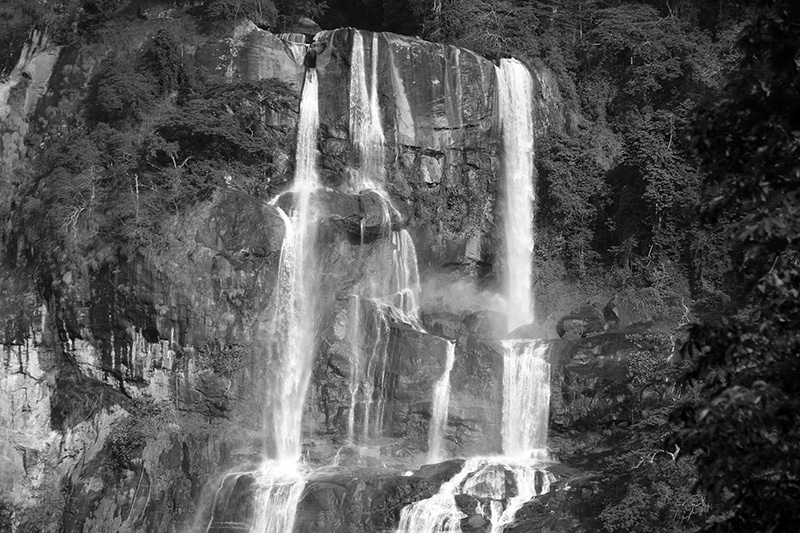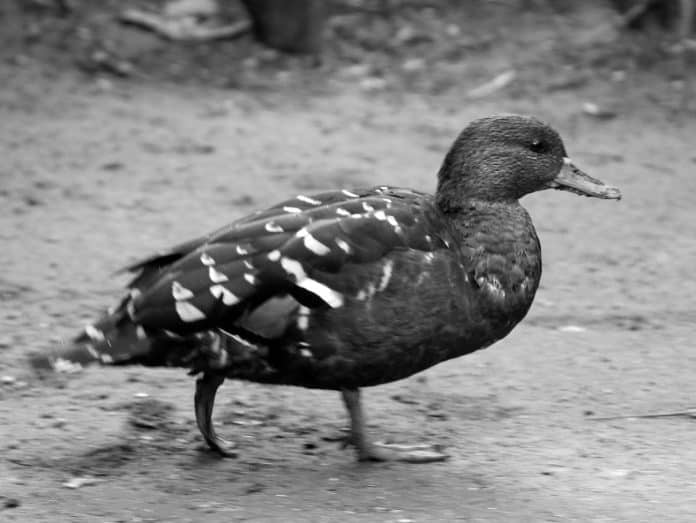African Black Duck in Tanzania: Exploring the Untamed Wilderness of its Natural Habitat
The African Black Duck (Anas sparsa) is a fascinating and elusive species that can be found in the untamed wilderness of Tanzania. This beautiful bird is native to the African continent and is known for its distinctive black plumage. In this article, we will delve into the habitat, behavior, and conservation efforts for the African Black Duck in Tanzania. Additionally, we will provide you with insights on the best places to spot this magnificent bird, photography tips for capturing it in its natural habitat, and interesting facts that will leave you awestruck. Join us on this journey as we explore the wonders of the African Black Duck in Tanzania.
The Habitat of the African Black Duck in Tanzania
The African Black Duck is primarily found in the wetland habitats of Tanzania. It is commonly sighted in the lush riverbanks, swamps, and shallow lakes that are abundant in this region. These wetlands provide the ideal environment for the African Black Duck to thrive, as they offer a plentiful supply of food sources such as aquatic plants, invertebrates, and small fish. The dense vegetation found in these habitats also provides ample protection and nesting sites for the ducks.
One of the most notable wetland areas where the African Black Duck can be found is the Selous Game Reserve. This vast protected area is home to a diverse range of wildlife and is a UNESCO World Heritage Site. The extensive network of rivers, lakes, and swamps in Selous creates a haven for the African Black Duck and other water-dependent species. The Rufiji River, which runs through the reserve, is a particularly rich habitat for these ducks. As you explore the wetlands of Tanzania, keep your eyes peeled for the African Black Duck, as it may appear when you least expect it.
Behavior and Characteristics of the African Black Duck
The African Black Duck is a secretive and elusive bird, making it a challenge to observe and study in the wild. These ducks are known for their shy nature and are often seen hiding amidst the dense vegetation of their wetland habitats. They are skilled divers and can spend long periods underwater foraging for food. The African Black Duck also possesses excellent flying skills, allowing it to swiftly navigate through the dense vegetation and escape potential predators.
In terms of physical characteristics, the African Black Duck is a medium-sized bird with a length of about 50-60 centimeters. Its plumage is predominantly black, with a glossy sheen that adds to its allure. The male and female ducks have similar appearances, making it difficult to differentiate between the sexes. However, during the breeding season, the male African Black Duck may display more vibrant colors and markings to attract a mate. Despite its dark exterior, the African Black Duck has a cheerful and melodic call that resonates through the wetlands, adding to the enchantment of its presence.
Conservation Efforts for the African Black Duck in Tanzania
The African Black Duck, like many other waterfowl species, faces numerous threats to its survival. Habitat loss and degradation, caused by human activities such as agriculture and infrastructure development, pose a significant challenge to the African Black Duck in Tanzania. Additionally, pollution from pesticides and other contaminants can have detrimental effects on the health and reproductive success of these birds.
To address these conservation concerns, various organizations and initiatives have been implemented in Tanzania. The Tanzanian government, in collaboration with conservation NGOs, has established protected areas and wetland reserves to safeguard the habitats of the African Black Duck and other water-dependent species. These protected areas not only provide a safe haven for the ducks but also promote the overall ecological balance of the region.
Furthermore, raising awareness among local communities and visitors about the importance of preserving the natural habitat of the African Black Duck is crucial. Encouraging responsible tourism practices, such as limiting disturbances to nesting and foraging sites, can go a long way in ensuring the survival of this magnificent bird. By supporting ecotourism initiatives that focus on sustainable wildlife viewing, we can contribute to the conservation efforts for the African Black Duck in Tanzania.
Best Places to Spot the African Black Duck in Tanzania

If you’re an avid birdwatcher or a nature enthusiast, Tanzania offers a plethora of opportunities to spot the elusive African Black Duck. As mentioned earlier, the Selous Game Reserve is a prime location to observe these ducks in their natural habitat. The reserve is easily accessible and offers a range of activities, including boat safaris and guided walks, which allow you to explore the wetlands and increase your chances of encountering the African Black Duck.
Another noteworthy destination is Lake Manyara National Park. This stunning park is renowned for its diverse birdlife, and the African Black Duck can often be observed swimming gracefully in the lake’s crystal-clear waters. The park is also home to a variety of other wildlife species, making it a must-visit destination for wildlife enthusiasts.
If you’re seeking a more off-the-beaten-path experience, consider visiting the Udzungwa Mountains National Park. This lesser-known park is characterized by its lush forests, sparkling waterfalls, and pristine rivers. The African Black Duck can be spotted along the riverbanks, where it seeks refuge in the dense vegetation. Exploring the Udzungwa Mountains National Park will not only offer you the opportunity to observe the African Black Duck but also provide a unique and immersive wilderness experience.
Photography Tips for Capturing the African Black Duck in its Natural Habitat
Capturing the beauty of the African Black Duck in its natural habitat requires patience, skill, and a keen eye for detail. Here are some photography tips to help you in your quest to photograph this elusive bird:
- Utilize a telephoto lens: The African Black Duck is often found in areas with dense vegetation, making it challenging to get close to them. A telephoto lens with a focal length of at least 300mm will allow you to capture detailed shots from a distance without disturbing the ducks.
- Be mindful of lighting conditions: The wetland habitats of the African Black Duck can be quite dimly lit, especially during early mornings and late afternoons. To ensure well-exposed photographs, consider using a tripod and adjusting your camera settings accordingly.
- Focus on capturing behavior: While it’s tempting to solely focus on capturing close-up portraits of the African Black Duck, try to diversify your shots by capturing their behavior in their natural habitat. Whether it’s preening, foraging, or taking flight, these moments will add depth to your photographs and tell a story.
- Pay attention to the surroundings: The African Black Duck is not the only subject of interest in its habitat. By incorporating the surrounding vegetation, water bodies, and other wildlife species into your compositions, you can create visually compelling images that showcase the entire ecosystem.
Remember, wildlife photography should always prioritize the well-being and conservation of the subject. Avoid disturbing the ducks or their habitat, and always adhere to ethical photography practices.
Other Wildlife Species Found in the Same Habitat as the African Black Duck
The wetland habitats of Tanzania are teeming with a diverse array of wildlife species, many of which coexist alongside the African Black Duck. These habitats provide essential resources such as food, water, and shelter, making them attractive to a wide range of animals. Some of the notable wildlife species found in the same habitat as the African Black Duck include:
- African Fish Eagle: This iconic bird of prey can often be spotted perched on branches overlooking the water bodies, ready to swoop down and snatch fish from the surface.
- Nile Crocodile: These ancient reptiles are formidable predators that lurk in the shallows, blending seamlessly with their surroundings. Keep a safe distance when observing them, as they can be highly dangerous.
- Hippopotamus: The rivers and lakes of Tanzania are home to large populations of hippos, which spend most of their time submerged in the water. These massive herbivores are known for their territorial behavior and loud vocalizations.
- African Spoonbill: With its distinctively long, spoon-shaped bill, the African Spoonbill is a striking bird that can be seen wading in the shallows, searching for small aquatic creatures to feed on.
These are just a few examples of the incredible diversity of wildlife that can be encountered in the wetland habitats of Tanzania. Exploring these areas will undoubtedly provide you with unforgettable wildlife sightings and photographic opportunities.
Interesting Facts about the African Black Duck in Tanzania
- The African Black Duck is not actually black: Despite its name, the African Black Duck’s plumage is a dark brown color, which appears black from a distance.
- They are highly adaptable: African Black Ducks can survive in a variety of wetland habitats, including coastal areas, rivers, and lakes. This adaptability allows them to thrive in different parts of Tanzania.
- They are skilled divers: The African Black Duck can dive underwater for extended periods, using its webbed feet to propel itself beneath the surface. It can remain submerged for up to a minute, foraging for food.
- They form monogamous pairs: African Black Ducks are known to form long-term monogamous pairs, with both males and females participating in raising their offspring.
- They are migratory birds: While some African Black Ducks are resident in Tanzania year-round, others undertake seasonal migrations in search of suitable breeding and feeding grounds.
The Importance of Preserving the Natural Habitat of the African Black Duck
Preserving the natural habitat of the African Black Duck is of utmost importance for the species’ survival and the overall ecological balance of Tanzania. These wetland habitats provide a range of ecosystem services, including water filtration, flood control, and carbon sequestration. They also support a diverse array of plant and animal species, many of which are dependent on these wetlands for their survival.
By protecting the natural habitat of the African Black Duck, we are safeguarding not only the future of this remarkable bird but also the countless other species that rely on these wetlands. Additionally, preserving these habitats contributes to the overall well-being of local communities, as they rely on the ecosystem services provided by the wetlands for their livelihoods.
Conclusion: Encouraging Ecotourism and Responsible Wildlife Viewing in Tanzania
The African Black Duck in Tanzania is a captivating species that offers a glimpse into the untamed wilderness of this beautiful country. By exploring its habitat, understanding its behavior, and supporting conservation efforts, we can contribute to the preservation of this magnificent bird and its natural habitat.
When visiting Tanzania, it is essential to engage in ecotourism practices that prioritize the well-being of the African Black Duck and other wildlife species. This includes respecting their habitats, minimizing disturbances, and supporting local initiatives that promote responsible wildlife viewing. By doing so, we can ensure that future generations can also enjoy the wonders of the African Black Duck and the natural splendor of Tanzania’s wetlands.
So, pack your bags and embark on an unforgettable journey to Tanzania, where you can witness the African Black Duck in all its glory. As you immerse yourself in the untamed wilderness, remember to tread lightly, capture memories through your lens, and leave nothing but footprints. Together, let us celebrate and protect the remarkable biodiversity that Tanzania has to offer.
For more articles related to Wildlife in Tanzania (Animals), click here!

































